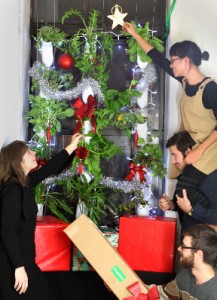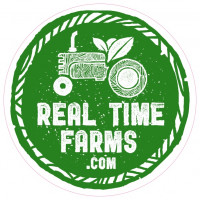Crowdsourcing innovation is all the rage these days. Large corporations like IBM, Nokia, and GE have all created web-based platforms to gather the wisdom of the masses.
When I first became interested in open innovation, I was both encouraged and fascinated by the growing interest in collaboration. My initial reaction was- this is great! This will help to improve the design of products and democratize innovation.
However, as I began engaging in these platforms, I couldn’t help but feel like they were designed to just take my [excellent] ideas without actually providing me with anything in return, under the guise of ideation. This got me thinking about the importance of mutual beneficiality in the design of businesses, collaboration platforms, new government websites, online tools, etc… YOU HAVE TO GIVE SOMETHING RELEVANT TO GET SOMETHING RELEVANT.
For this reason, I became quite taken with Britta Riley and herR&D-I-Y approach to crowdsourcing environmental innovation through her Windowfarms project. Windowfarms are vertical hydroponic farming systems that are designed to help apartment farmers and educators, with little access to space and light , get started growing their own food. The approach rewards contributors by providing them with useful tools or blueprints, empowering them to create and popularize innovative sustainable solutions, and providing a support and innovation community.
Inspired by Michael Pollan and Clay Shirky, the project started with an open source prototype farm that was shared online. This allowed anyone to build their own window farm and then contribute to improving the design as part of a mass collaboration. Windowfarms created an interactive community platform where their 15,000+ community member can propose experiments, learn from others, and test and share techniques. Community members benefit from online and offline activity.
This year the Windowfarms team made it even easier for apartment farmers and educators to get started on their farm with awesome kits that would make a great holiday gift!
I got to catch up with Britta to learn more about what’s made her approach successful. Enjoy!
Danielle Gould: What question do you wish people would ask you, but they don’t?
Britta Riley: How can you apply opensource software development techniques to a physical system design? What are the design principles behind windowfarms and how do you decide which community ideas get folded into the next upgrade? Also, I think our terms of service agreement is pretty interesting.
DG: How many active participants do you have? What do you think motivates them to actively engage in the community?
We have about 8 “superusers” who are active on the site at least once a week to several times daily. I’m grateful that they are all really awesome guys. Most of them are experienced in either hydroponics or engineering/diy construction and enjoy sharing their knowledge with a different crowd than their typical insider circles.
One is a teacher whose wine glass windowfarm modification turned out really well and he’s just so happy to have other folks coming on board to share his experience with.
They are in France, Australia, Finland and the States. They have all embraced the spirit of r&diy and encourage newbies. We usually have another handful of people whose activity peaks as they get their systems set up or as their plants mature.
Given the amount of work it takes to gather all the parts to builds system from scratch, we’re pretty impressed by people’s hutzpah and enthusiasm about the idea of having a windowfarm. We hope that having kits an involving schools will lower barriers for everyone else who may have had the will but not the time. In January we expect a flourish of activity from all the new kit owners.
DG: What is the most surprising thing you have learned from the window farm community?
BR: Geographic variability. Because our model relies on the internet, we have had little control over the fact that this has been a global project pretty much from its inception. It has been a joy to witness that people all over the world are concerned about overhauling their food systems. While everyone is lamenting the effects of industrialized food supplies fairly unanimously, the variability of requirements, conditions, materials, infrastructure, appetites, climates, an citizen concerns between countries is astounding.
In Finland, they love windowfarms because it’s dark half the year and a lot of their produce is already grown hydroponically so having a lush system they can interact with themselves at home during the winter is a natural fit. The Fins bring expertise in LED growlights as well because they are so concerned about energy costs.
It’s amazing how much plumbing parts vary between countries. We have had to confront a lot of inaccurate assumptions about what people in other countries would have access to.
DG: How does a windowfarm benefit k-12 school curriculum?
BR: The subject of growing one’s own food stands at a nexxus of of intersecting ideas. Hydroponic food growing and windowfarms in particular make visible a lot of aspects of food growing that many of us never get to see so there are a lot of opportunities for “I wonder why. . . ?” learning moments that tend to be more impactful than rote book learning. Teachers in our online community’s teachers group share and collaborate on ideas about how to use the systems to teach about everything from math and science to social studies and art.
DG: Why should someone give the gift of R&D-I-Y this holiday season?
BR: We humans gain a certain very basic pleasure out of feeling that we have just come up with a good idea. I have yet to meet a person who does not have something to say, even if it be cynical, about windowfarms and the “green revolution.” R&D-I-Y combines a physical and online social platform for partaking in these discussions and giving voice to one’s ideas. And who doesn’t want some fresh edible greenery around in the dead of winter?







